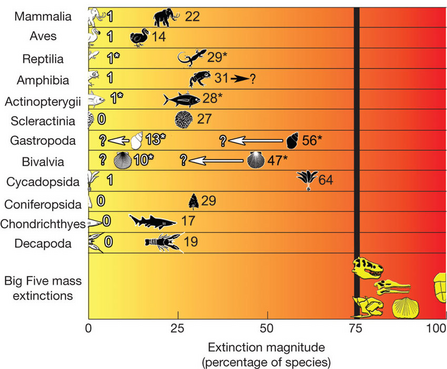This is the first in a series of blogs that will be documenting my journey through my PhD, which is being funded by the Space 4 Nature project. The PhD will be supporting the project and aims to provide a historic baseline to compare the current state of the environment against. In short, I will attempt to determine how rich in life Surrey should be, in the absence of man’s presently deleterious influence on biodiversity. This will be done using a field of science known as palaeoecology, which is the study of past ecosystems and environments. In palaeoecology, we use biological and non-biological materials (such as fossils, lake sediments and ice cores) to indicate what the environment might have been like during the time they are from. In this first blog, I will be discussing the state of biodiversity through the palaeoecological lens.
Space4Nature: What can palaeoecology teach us about restoring nature in Surrey?

We are facing an unprecedented biodiversity crisis, which is inextricably linked with the equally severe climate crisis. It has been posited that we have entered into a sixth Mass Extinction event. A Mass Extinction event is a time at which the extinction rate is massively higher than the “normal” background levels, and a significant percentage of all species go extinct (usually at least 70%). Officially, only five Mass Extinction Events have taken place throughout the 4.5-billion-year history of the Earth, known as the "Big Five". The largest of these was the End-Permian Mass Extinction (250 million years ago), which saw the extinction of 90-96% of species. These are clearly very big, very dramatic events that see a massive overhaul and resetting of the Earth’s biota, and they don’t happen very often. With that in mind, can we really equate what’s going on right now?
Whilst the fact that humans have had a dramatic impact on global biodiversity and caused many extinctions (local and global) is undisputable, the question of whether this counts as a Mass Extinction is a contentious one. When you look at it numerically, we’re simply not at the same magnitude as the other five events (yet). In the graph below, which is from a 2011 study, the yellow symbols represent extinction levels in the other Mass Extinctions, in comparison to current extinction rates of different animal groups. This does, however, come with a lot of caveats around gaps in the fossil record, estimations of diversity from limited source materials, and understudied modern species. For example, only 1% of modern bivalves (think clams, mussels, etc.) have been assessed in terms of their vulnerability. These also disproportionately make up the species counts for the past extinction events, since they typically preserve very well in the fossil record. So, although the graph looks relatively clear cut at first glance, it’s not quite as black and white as that.

Extinction magnitudes of IUCN-assessed taxa in comparison to the 75% mass-extinction benchmark. Source: Barnosky, A., Matzke, N., Tomiya, S. et al. Has the Earth’s sixth mass extinction already arrived?. Nature 471, 51–57 (2011).
Another way of approaching the question is to think about the rate of extinction, rather than the sheer numbers. We tend to expect that for a true Mass Extinction, the extinction rate reaches in excess of 1000x the natural background rate. This is typically expressed as E/MSY or Extinctions per Million Species-years, and the agreed background rate tends to vary depending on the species, but on average tends to be about 1 E/MSY. Again, it gets a bit confusing trying to equate fossils with modern species and converting geological time scales (millions of years) into human time scales (hundreds of years), but estimates seem to point to current extinction rates equalling the levels seen during other Mass Extinctions. In fact, one study suggested that if all species currently listed as threatened went extinct as well, the extinction rates have the potential to increase tenfold and exceed the other extinction events.
Whichever metric you use to think about the concept, the evidence does not paint a particularly positive outlook for the near future of biodiversity. Whether or not we meet the definition of the geological Mass Extinctions, the magnitude of extinctions and biodiversity loss we have seen in recent decades and centuries is far from what should be thought of as “normal”, and possibly not that far from reaching these thresholds. Of course, the major difference is that all of these prior extinction events were caused by natural phenomena (meteorites, volcanoes and the like) whereas the current biodiversity crisis is very clearly anthropogenic in nature.
Hopefully this has given you a little flavour of the importance of looking at modern issues through a palaeoecological lens. With biodiversity loss, palaeoecology gives us the insight to compare current trends with what should be “normal”, and that is the same logic I will be using in the PhD to try and find Surrey’s “normal”. More on that in the blogs to come!
